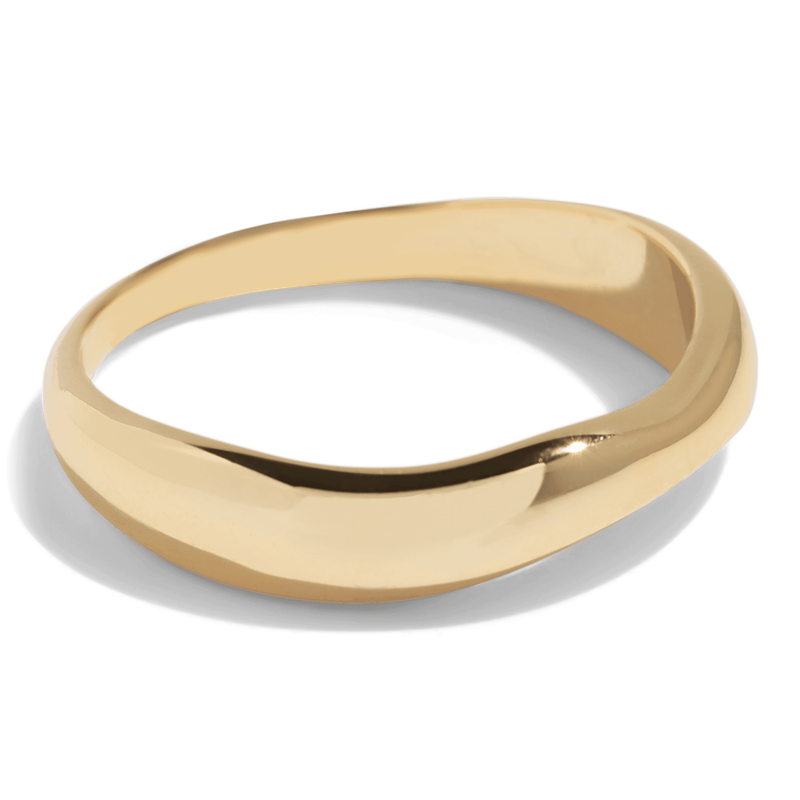Messing vs.. 925 Sølv til guldbelagte ringe: En omfattende produktionsvejledning

Indledning
When producing gold-plated rings, manufacturers and designers must carefully consider their base metal selection. The two most popular options—brass and 925 sterling sølv—each offer distinct advantages and challenges. This in-depth 5,000-word guide examines the key factors in choosing between brass and silver for gold-plated ring production, inklusive:
-
Materialeegenskaber & Sammensætning
-
Omkostningsanalyse & Budget Considerations
-
Holdbarhed & Longevity Comparison
-
Plettering vedhæftning & Finish Quality
-
Designfleksibilitet & Production Feasibility
-
Skin Sensitivity & Hypoallergenic Factors
-
Environmental & Ethical Sourcing Implications
-
Casestudier & Real-World Applications
Til sidst, you’ll have a clear understanding of which base metal best suits your gold-plated ring production needs.
1. Materialeegenskaber & Sammensætning
Messing (Copper-Zinc Alloy)
-
Sammensætning: Typically 60-80% kobber + 20-40% zink
-
Nøgleegenskaber:
-
High malleability, excellent for intricate designs
-
Naturally antimicrobial (copper content)
-
Denser than silver (8.73 g/cm³ vs. 10.49 g/cm³)
-
Lower melting point (900-940° C.)
-
925 Sterling sølv (92.5% Sølv + 7.5% Kobber)
-
Sammensætning: 92.5% Rent sølv + 7.5% kobber (for hårdhed)
-
Nøgleegenskaber:
-
Softer than brass but more ductile
-
Higher intrinsic value (precious metal status)
-
Prone to tarnishing without plating/protection
-
Melting point: ~890°C
-
Winner for Plating Adhesion: Messing (copper content improves bonding)
2. Omkostningsanalyse & Budget Considerations
| Faktor | Messing | 925 Sølv |
|---|---|---|
| Materialeomkostninger | 3−8/kg | 600−800/kg |
| Plating Efficiency | Fremragende | God (requires thicker plating) |
| Waste & Recycling | Low-cost scrap value | Higher scrap value recovery |
| MOQ Feasibility | Better for bulk orders | More expensive for large quantities |
Cost-Effectiveness Winner: Messing (Ideal for fashion jewelry brands)
Luxury Perception Winner: 925 Sølv (Preferred for premium collections)
3. Holdbarhed & Longevity Comparison
Brass Rings
✔ More scratch-resistant than pure silver
✔ Heavier weight provides a premium feel
✔ Less prone to bending under pressure
✖ Can oxidize (develop patina) if plating wears off
925 Sølvringe
✔ Naturally hypoallergenic (better for sensitive skin)
✔ Easier to resize/repair due to malleability
✖ Softer metal – may deform with daily wear
✖ Requires anti-tarnish coating beneath gold plating
Durability Winner: Messing (for long-term wear resistance)
Luxury Longevity Winner: 925 Sølv (if properly maintained)
4. Gold Plating Performance
Beklædning på messing
-
Better adhesion due to copper content
-
Thinner plating required (1-2 Mikron)
-
Less likely to show base metal if scratched
Plating on 925 Sølv
-
May require nickel barrier layer (for hypoallergenic needs)
-
Needs 2-3 mikron minimum to prevent tarnish bleed
-
Higher risk of “peeling” if plating is too thin
Plating Efficiency Winner: Messing
5. Design & Manufacturing Factors
| Consideration | Messing | 925 Sølv |
|---|---|---|
| Casting Detail | Excellent for intricate designs | Slightly less crisp edges |
| Graveringskvalitet | God, but harder to hand-engrave | Smoother for fine engraving |
| Stenindstilling | Stronger prongs | More malleable prongs |
| Polishing Finish | Requires more effort | Naturally brighter surface |
Bedst til detaljerede designs: Messing
Best for Handcrafted Luxury: 925 Sølv
6. Hypoallergenisk & Hudsikkerhed
-
Messing: May cause reactions for nickel-sensitive wearers (medmindre nikkelfri)
-
925 Sølv: Naturally hypoallergenic (ideal for sensitive skin)
Løsning:
-
Bruge nickel-free brass alloys (F.eks., C26000)
-
Anvende rhodium or palladium barrier under gold plating
Safety Winner: 925 Sølv
7. Bæredygtighed & Ethical Factors
-
Messing:
✔ Often made from recycled materials
✖ Zinc mining has environmental impact -
925 Sølv:
✔ Recyclable indefinitely
✖ Silver mining has higher ecological footprint
Miljøvenligt valg: Both can be sustainable with responsible sourcing
8. Real-World Case Studies
Case 1: Fashion Jewelry Brand (Brass Base)
-
Produkt: Gold-plated statement rings
-
Resultat:
-
30% lower production cost vs. sølv
-
No customer complaints about tarnishing
-
18-month plating durability with proper care
-
Case 2: Luxury Designer (925 Silver Base)
-
Produkt: High-end gold-plated wedding bands
-
Resultat:
-
Higher perceived value justified 2x retail price
-
Required thicker plating (3 Mikron) for lang levetid
-
Preferred by customers with metal allergies
-
Final Recommendation: Hvilken skal du vælge?
Choose Brass If You Need:
✅ Cost-effective production
✅ Heavy, durable rings
✅ Complex geometric designs
✅ Bulk order feasibility
Vælge 925 Silver If You Need:
✅ Luxury market positioning
✅ Hypoallergenic safety
✅ Easier resizing/repairs
✅ Higher perceived value
Konklusion
Both brass and 925 silver are excellent choices for gold-plated rings, but the best option depends on your budget, target market, and design requirements.
-
Brass wins for Prisbarhed, holdbarhed, and plating efficiency
-
925 Silver wins for luxury appeal, hypoallergenic properties, and prestige
Til spidsen: Some brands use brass for fashion lines og 925 silver for premium collections to balance cost and quality.
